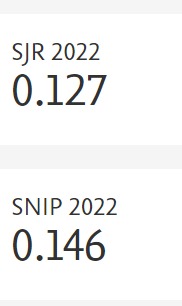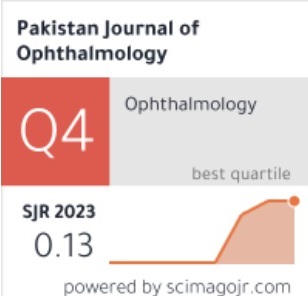Preferences and Trends in Management of Rhegmatogenous Retinal Detachment in Pakistan
Doi: 10.36351/pjo.v37i1.1157
DOI:
https://doi.org/10.36351/pjo.v37i1.1157Keywords:
Rhegmatogenous retinal detachment, Retinal break, Pars Plana Vitrectomy, Pneumatic Retinopexy.Abstract
Purpose: To report the preferences and trends in managing Rhegmatogenous retinal detachment (RRD) in Pakistan.
Study Design: Cross sectional survey.
Place and Duration of Study: Shifa International Hospital, Islamabad, from December 2018 to January 2019.
Method: A survey was conducted in which the vitreo-retinal (VR) surgeons were asked to respond to 10 questions. The questions were meant to assess their practice and management strategies in treating RRD. Duration of survey was 1 month.
Results: Sixty-two VR surgeons of Pakistan responded to this survey. Most of the VR surgeons belonged to Punjab (56%) followed by Sindh (25%). Regarding their primary practice setting 50% of VR surgeons worked both in government and private practice, 30% practiced in academic/university hospital and 20% of them had only private practice. Seventy percent of VR surgeons in Pakistan preferred local anaesthesia. In non-posterior vitreous detachment (PVD) RRD, majority (69%) performed segmental buckling (SB) with or without encirclement. In pseudophakic superior macula on RRD with a single retinal tear 50% preferred pars plana vitrectomy (PPV) followed by SB in 25% and pneumatic retinopexy in 18%. In inferior macula off RRD with a retinal tear at 7 0’clock position, 56% of the VR surgeon performed PPV alone or combined with SB.
Conclusion: There is an increased trend towards PPV as a primary procedure for RRD in Pakistani VR surgeons. Local anaesthesia is the preferred anesthesia.
Key Words: Rhegmatogenous retinal detachment, Retinal break, Pars Plana Vitrectomy, Pneumatic Retinopexy.






